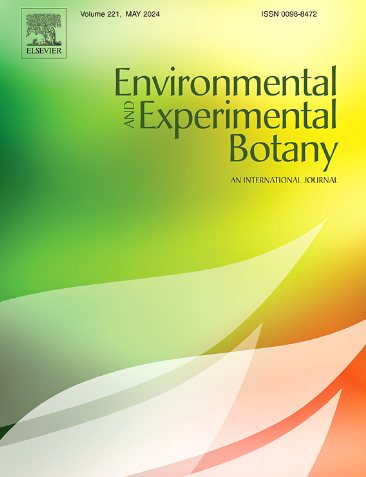蛋白酶和泛素-蛋白酶体系统:了解植物在热胁迫下的蛋白质降解
IF 4.7
2区 生物学
Q2 ENVIRONMENTAL SCIENCES
引用次数: 0
摘要
增强的蛋白质损伤是植物热胁迫的常见后果。清除这些受损蛋白质的一种方法是通过蛋白酶和泛素-蛋白酶体系统(UPS)等蛋白质水解机制将其降解为氨基酸。蛋白酶负责细胞器内蛋白质的分解,而UPS主要在细胞质和细胞核内通过将多泛素链附着在靶蛋白上进行蛋白质水解。这一过程在保护细胞免受热应激方面特别重要,因为它可以防止有毒聚集体的积累,从而在维持植物正常代谢活动的同时减少细胞衰老和死亡。本文就丝氨酸蛋白酶、天冬氨酸蛋白酶、半胱氨酸蛋白酶和金属蛋白酶等不同蛋白酶家族在植物热胁迫反应中的作用进行综述。此外,我们总结和讨论了UPS在耐热性中的作用,特别关注了两个关键成分:E3连接酶和26S蛋白酶体。此外,本文还强调了泛素组学在非生物胁迫研究中的最新进展,表明利用泛素组学作为识别更多UPS底物并表征其在热应激反应中的功能的有力工具的潜力。了解蛋白质降解是如何在热胁迫下被调节的,可以更深入地了解植物的耐热机制。本文章由计算机程序翻译,如有差异,请以英文原文为准。
Proteases and the ubiquitin-proteasome system: Understanding protein degradation under heat stress in plants
Enhanced protein damage is a common consequence of heat stress in plants. One approach to removing these damaged proteins is to degrade them into amino acids via proteolytic machinery, such as proteases and the ubiquitin-proteasome system (UPS). Proteases are responsible for the breakdown of proteins inside the organelles, while the UPS conducts proteolysis mainly in the cytoplasm and nucleus by attaching polyubiquitin chains to the target proteins. This process is of particular importance in protecting cells against heat stress, as it prevents the accumulation of toxic aggregates, thereby reducing cellular aging and death while maintaining normal metabolic activities in plants. In this review, we focus on the roles of different protease families in plant responses to heat stress, including serine proteases, aspartic proteases, cysteine proteases, and metalloproteases. Additionally, we summarize and discuss the involvement of the UPS in thermotolerance, with special attention to two key components: E3 ligases and 26S proteasome. Furthermore, recent advances in ubiquitin-omics in the study of abiotic stress are highlighted, suggesting the potential of utilizing ubiquitin-omics as a powerful tool to identify more UPS substrates and to characterize their functions in heat stress response. Understanding of how protein degradation is regulated in response to heat stress provides a deeper insight into thermotolerance mechanisms in plants.
求助全文
通过发布文献求助,成功后即可免费获取论文全文。
去求助
来源期刊

Environmental and Experimental Botany
环境科学-环境科学
CiteScore
9.30
自引率
5.30%
发文量
342
审稿时长
26 days
期刊介绍:
Environmental and Experimental Botany (EEB) publishes research papers on the physical, chemical, biological, molecular mechanisms and processes involved in the responses of plants to their environment.
In addition to research papers, the journal includes review articles. Submission is in agreement with the Editors-in-Chief.
The Journal also publishes special issues which are built by invited guest editors and are related to the main themes of EEB.
The areas covered by the Journal include:
(1) Responses of plants to heavy metals and pollutants
(2) Plant/water interactions (salinity, drought, flooding)
(3) Responses of plants to radiations ranging from UV-B to infrared
(4) Plant/atmosphere relations (ozone, CO2 , temperature)
(5) Global change impacts on plant ecophysiology
(6) Biotic interactions involving environmental factors.
 求助内容:
求助内容: 应助结果提醒方式:
应助结果提醒方式:


